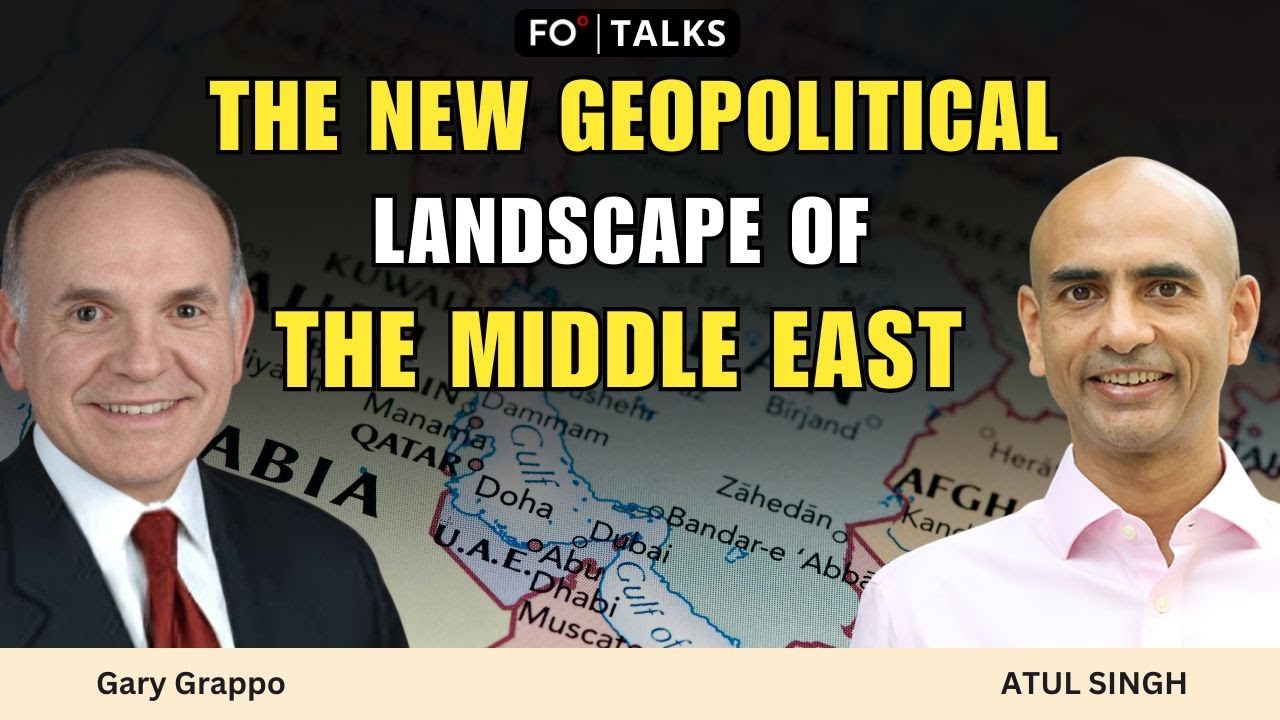Throughout my academic career, which has spanned over four decades, I have been deeply engaged in Syrian and Lebanese affairs in various capacities. As both an academic and government official, I have focused my studies on these regions, their complexities and political dynamics. I have also been a peace negotiator — I participated in discussions between Israel and Syria in the aftermath of the Madrid Peace Conference in 1991 and again in 1992. This long-standing focus on the Middle East has inevitably tied my work to the Assad family. First, with the regime of the older dictator, Hafez al-Assad, and later with his son, Bashar.
In this FO° Talks video series, I will be discussing the current political and societal changes occurring in Syria. They represent a continuation of the long-standing struggle of Syria to define itself and establish a collective identity. Over the decades, the Syrian state has experienced various political regimes, each attempting to resolve the inherent sectarian divisions and to forge a sense of unity. However, as we have seen recently, these attempts have continued to fail.
In Part 1, I aim to explore the broader context of Syria’s ongoing struggle for a cohesive identity and stability. This has been at the heart of the country’s challenges since the early 20th century.
Syria’s struggle for collective identity
The history of modern Syria dates back to 1920, when the French took over and established a mandatory regime over the region. Despite gaining independence in 1946, Syria has remained in a constant search for a collective identity — a unifying definition of who the Syrian people are and what the nation’s role in the Middle East should be. This search for identity has been complicated by the country’s diverse mix of ethnicities and religious sects. In an attempt to overcome these divisions, Syria has undergone numerous political experiments, each of which has ultimately failed to provide a stable foundation.
From 1946 to 1949, Syria briefly experimented with parliamentary democracy. This period was marked by elections but ended with Syria’s defeat in the 1948 Arab–Israeli War, when it sought to prevent Israel from forming its own state. After the war, Syria experienced three military coups in 1949 and the dictatorship of Adib Shishakli from 1951 to 1954. The ideology of Arab nationalism was central to these regimes, with slogans like “Syria, the heart of Arabism” (“Qalb al-Arab”) dominating political rhetoric.
From 1954 to 1958, Syria retried parliamentary democracy. This failed again; the Syrian state collapsed, which led the nation to briefly enter into a union with Egypt. The United Arab Republic as it was called dissolved in 1961. In 1963, the Ba’ath Party rose to power. This marked the beginning of an era in which Syria would be ruled by a one-party, authoritarian state.
The era came in two stages: From 1963 to 1970, the Neo-Ba’athist Party government operated with some degree of internal division and chaos. Then in 1970, Hafez al-Assad took control through a coup. Assad’s regime would endure until 2000, when his son, Bashar al-Assad, succeeded him and continued the autocratic rule.
However, despite all these attempts at forging a national identity and political stability, the core issue remained unresolved: Syria’s deep-rooted sectarianism. The country is home to a mix of Sunni Muslims, Alawites, Druze, Kurds and various Christian communities. Several of these groups were called compact minorities, and were relegated to a specific territory — for example, the Kurds lived in the Syrian northeast while the Druze lived in the southwest. The nation has a delicate social fabric, especially regarding the Sunni–Alawite rift deepened by the 1982 massacre in the city of Hama and the Arab Spring protests of 2010–2011. Assad’s regime attempted to suppress these historic divisions, but rather than uniting the population, it intensified the sectarian tensions.
This failure to create a unified identity based on shared values has been one of the central factors in the eventual collapse of the Assad regime and the country’s instability.
Rise of Islamism and the future of Syria
Fast-forward to the present day, and Syria is once again in the midst of a crisis. The most recent attempt to create a cohesive national identity seems to be failing as well, as we see the rise of Islamism and jihadist movements within the country. Although Islamism has a long history in Syria, dating back to the 1930s with the influence of the Muslim Brotherhood, it has never before played such a dominant role in shaping the political landscape.
The most prominent Islamist group today is Hay’at Tahrir al-Sham (HTS), a jihadist organization that has become a significant player in the Syrian conflict. HTS is largely influenced by Turkey and represents a new era of Islamist ideology in Syria. Unlike the Islamist movements of the past, which were more localized and independent, HTS is now part of a broader regional jihadist movement. The group’s leaders, like Abu Muhammad al-Julani (who now goes by Ahmed al-Sharaa), have made attempts to present themselves as moderate, taking a more relaxed stance on Islamic governance. However, the underlying ideology remains one of violent jihad and the establishment of an Islamic state.
The current wave of Islamism in Syria presents a stark contrast to the earlier Ba’athist regime, which sought to create a pan-Arab identity. Despite the differences in approach, both regimes are driven by the same underlying desire: to create a collective identity for a fragmented nation. The key difference now is the role of foreign influence, particularly from Turkey and other regional powers, in shaping the course of Syria’s future.
What does this mean for Syria? Will the country move towards an Islamic regime? Will another form of governance emerge? The answers remain unclear. However, what is certain is that the quest for a cohesive national identity in Syria continues. The sectarian divisions that have plagued the country for so long remain unresolved, and each new regime has failed to bring about lasting stability or unity. Syria’s quest for a unified, stable identity is far from over.
[Aaditya Sengupta Dhar and Lee Thompson-Kolar edited this piece.]
The views expressed in this article/video are the author’s own and do not necessarily reflect Fair Observer’s editorial policy.






































Comment